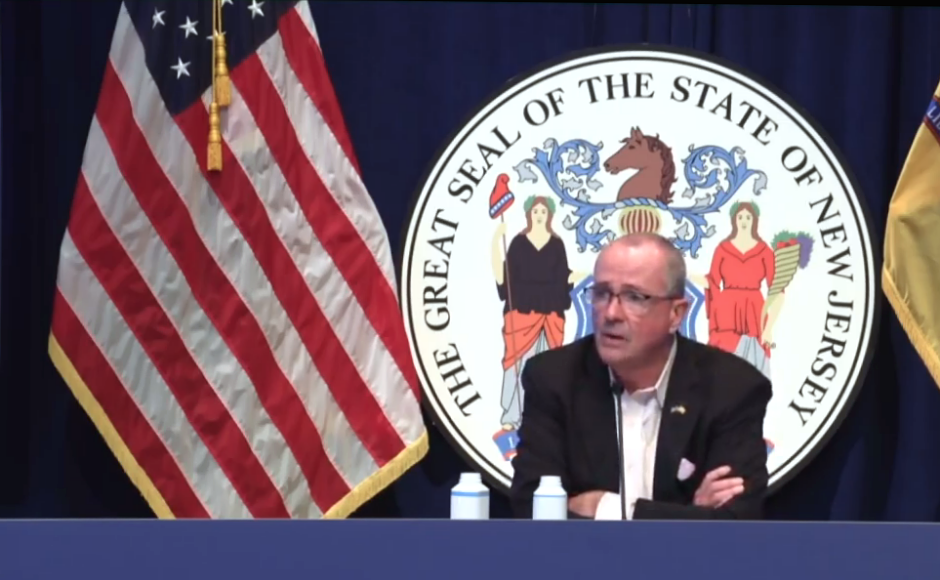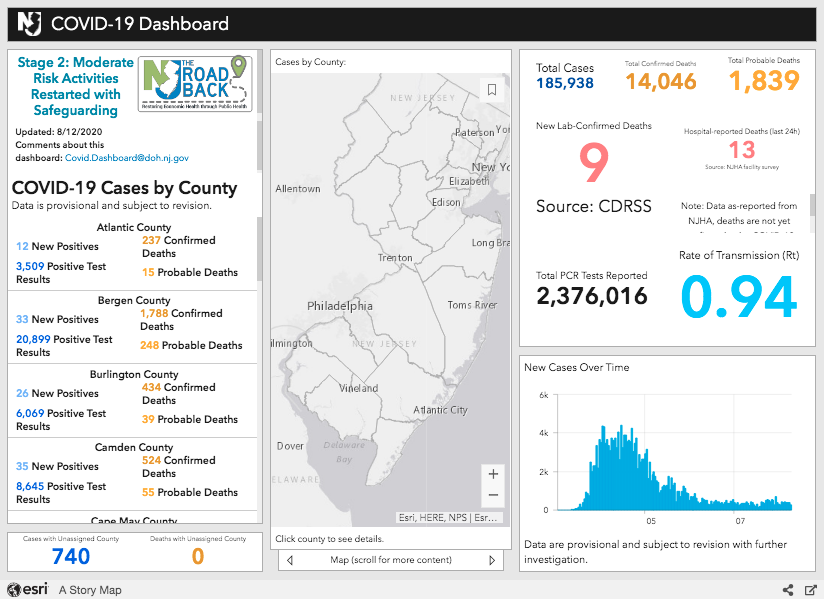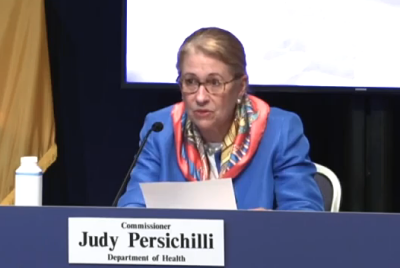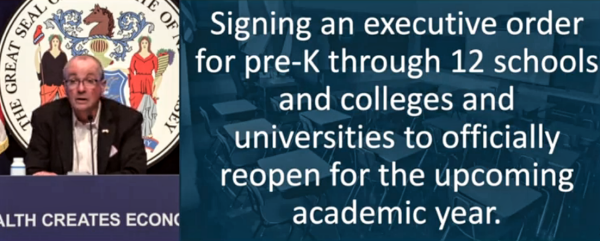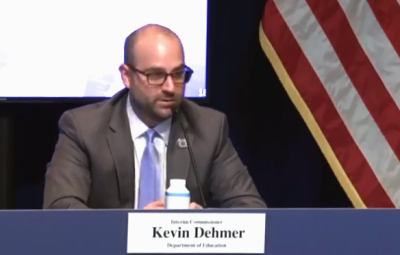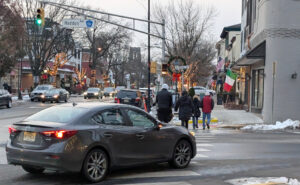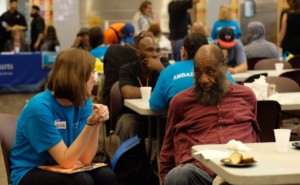Districts that delay in-person reopenings must have a target date and a plan to resolve health and safety issues. Plus: Murphy’s $9.9B borrowing plan is upheld in the state Supreme Court.
By Matt Skoufalos | August 12, 2020
Another 484 New Jersey residents have tested positive for novel coronavirus (COVID-19), bringing the statewide total to 185,938 cases, Governor Phil Murphy reported Wednesday.
Sadly, nine more residents have perished from complications related to the virus, bringing the statewide death toll to 14,046 lives lost during the pandemic.
In addition to those lab-confirmed fatalities, the state acknowledged another 1,853 probable COVID-19-related deaths, adjusted down by 14 from prior reported levels.
Rate of transmission (Rt) falls to 0.96, spot positivity highest in South Jersey
The statewide average of COVID-19 spot positivity testing stood at 2.09 percent August 8; it’s highest in South Jersey, at 2.64 percent.
Rt, the variable that describes the seven-day, rolling average rate of transmission of new COVID-19 cases, fell slightly to 0.96 from samples taken August 10, declining from a recent high of 1.48 recorded August 1.
An Rt figure of less than 1.0 means that each new COVID-19 patient is infecting less than one other person, on average, which means the spread of the virus is slowing.
The lowest reported Rt in New Jersey since its mid-April COVID-19 spike was 0.62, recorded June 9.
Long-term care accounts for half of all deaths, a fifth of those infected
Throughout New Jersey, 592 people currently are hospitalized with a case of COVID-19: 296 have tested positive for COVID-19, and 296 are awaiting confirmation of their symptoms.
Among those hospitalized patients, 111 are in intensive or critical care, and 35 of the ICU and critical-care patients (35 percent) are on ventilators.
Across the state, 621 long-term care (LTC) centers have reported at least one case of COVID-19, and 231 are dealing with an active outbreak. LTCs account for 37,629 infected patients and staff in New Jersey, or 20 percent of total cases.
That includes 24,619 residents and 13,010 staffers sickened by the virus, as well as 6,966 lab-confirmed resident deaths (50 percent of the statewide total) and 120 facility-reported staff deaths.
Of 654 veterans residing in a state-run home, 388 residents have tested positive for COVID-19, and 146 have died from complications related to the virus. Ten veterans presently are hospitalized with COVID-19, and 240 have recovered from the virus.
At state-run psychiatric facilities, 213 of 1,202 patients and 513 staff members have tested positive for COVID-19. Thirteen patients and six staffers have died from complications related to the virus.
To date, 55 New Jersey children aged 1 to 18 have been diagnosed with pediatric multisystem inflammatory syndrome, New Jersey Health Commissioner Judy Persichilli said. There have been no new cases this week.
All have tested positive for an active COVID-19 infection or the presence of COVID-19 antibodies, indicating exposure to the virus. No deaths have been associated with this syndrome in New Jersey.
Schools, colleges, universities cleared to reopen; remote-only waiver available
On Wednesday, Murphy signed an executive order clearing New Jersey schools to resume in-person instruction, from pre-k through university levels, provided that institutions follow social distancing and other health and safety protocols.
“Any student who chooses to continue remote learning must be accommodated,” he added.
Before reopening, any school must certify to the state Department of Education (NJDOE) that it can meet “the health and safety standards necessary to resume in-person instruction,” the governor said.
Those that can’t make that certification will begin their school years with fully remote instruction. However, to qualify for this exception, institutions must explain why they can’t reopen safely in person, and must establish a target date to have those issues resolved.
“There has to be a rationale associated with not opening at least in hybrid,” Murphy said. “And there does need to be a date. We need to understand what the shortcomings are and when you expect them to be addressed.”
To this point, NJDOE had only offered individual families the choice of fully remote instruction for the 2020-2021 school year. Wednesday’s guidance reflects the first time the state has acknowledged that some districts may be better served by fully virtual offerings.
Interim Commissioner of Education Kevin Dehmer said that “a vast, vast majority” of New Jersey schools have filed plans with the state for a hybrid in-person-and-remote-learning option, and that “a select number are asking for remote-only.”
Districts that have already submitted their plans may amend their filings with the NJDOE in light of the new, fully remote option.
Dehmer underscored that districts asking to go entirely virtual must “make a good-faith effort in the interim” to satisfy the health and safety conditions for resuming in-person instruction.
Health department designates regions for COVID-19 monitoring
To help assess the spread of COVID-19 and its potential impact on schools throughout the state, the New Jersey Department of Health (NJDOH) has divided the state into six regions, for the purposes of offering tailored guidance to residents of each:
- Northwest: Morris, Passaic, Sussex, and Warren Counties
- Northeast: Bergen, Essex, and Hudson Counties
- Central West: Hunterdon, Mercer, and Somerset Counties
- Central East: Middlesex, Monmouth, Ocean, and Union Counties
- Southwest: Camden, Gloucester, Burlington and Salem Counties
- Southeast: Atlantic, Cape May, and Cumberland Counties
The regionalized system is intended to provide a visual snapshot of conditions on the ground to help guide the actions of local health departments, Persichilli said.
“These regions are similar to how we manage flu surveillance, and provide a guide as we continue our journey of mitigating COVID-19,” she said.
Regions will be color-coded on a four-phase spectrum—green, yellow, orange, and red—to illustrate community-level viral transmission risks. The colors will be derived from numerically scored categories—number of cases, percent positivity, and syndromic surveillance—and will be updated weekly.
NJSC rules $9.9 billion bond measure can proceed
On Wednesday, Murphy also reported that the New Jersey COVID-19 Emergency Bond Act survived a state Supreme Court challenge from the New Jersey Republican Party, clearing the way for the legislature to borrow as much as $9.9 billion to address its financial shortfalls.
Appellate law blogger Bruce Greenberg notes, however, that the borrowing comes with a caveat, as per the court’s opinion, written by Chief Justice Stuart Rabner:
“To avoid borrowing in excess of what the law allows, and to be faithful to the Emergency Exception, the State cannot issue bonds or borrow funds beyond the actual fiscal exigency caused by the pandemic. In order to satisfy those concerns, it will be necessary for the Governor or the Treasurer to certify publicly the State’s projected revenue and consequent shortfall ‘as a result of the COVID-19 pandemic’ before each tranche of borrowing.”
In July, Murphy established a financial compliance oversight task force to ensure public confidence in the disbursement of funds used in New Jersey pandemic relief efforts.
“I don’t wake up wanting to borrow, but we’re also in a corner, and we’ve got to be there for our residents in their darkest hour of need,” the governor said.
New Jersey can’t afford federal payroll tax holiday, Part II
Signed August 8 amid a federal legislative stalemate on COVID-19 relief measures, President Donald Trump’s “payroll tax holiday” executive order would allow workers earning less than $100,000 to defer withholding of Social Security and Medicare contributions from their paychecks for the final quarter of the calendar year.
On Monday, Murphy said the move would have “little if any stimulus effect on the national economy,” adding that he didn’t think New Jersey “could afford to participate in this program.
“Unfortunately, a payroll tax holiday will not save workers anything in the long run, as they will still be on the hook for the taxes owed come next April 15,” Murphy said at the time.
“A payroll tax holiday diverts billions of dollars we need for Social Security and Medicare,” he said, adding that it “means nothing to the unemployed when there is no paycheck coming in.
On Wednesday, the governor estimated New Jersey would forgo an estimated $1.725 billion in potential federal benefits for its residents under a payroll tax holiday, in addition to “the cost of setting up a system that we don’t even have.
“We need Congress to act,” the governor said, renewing his call for federal aid to plug the estimated $20-billion hole in the state budget.


